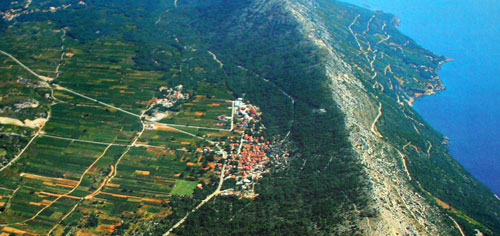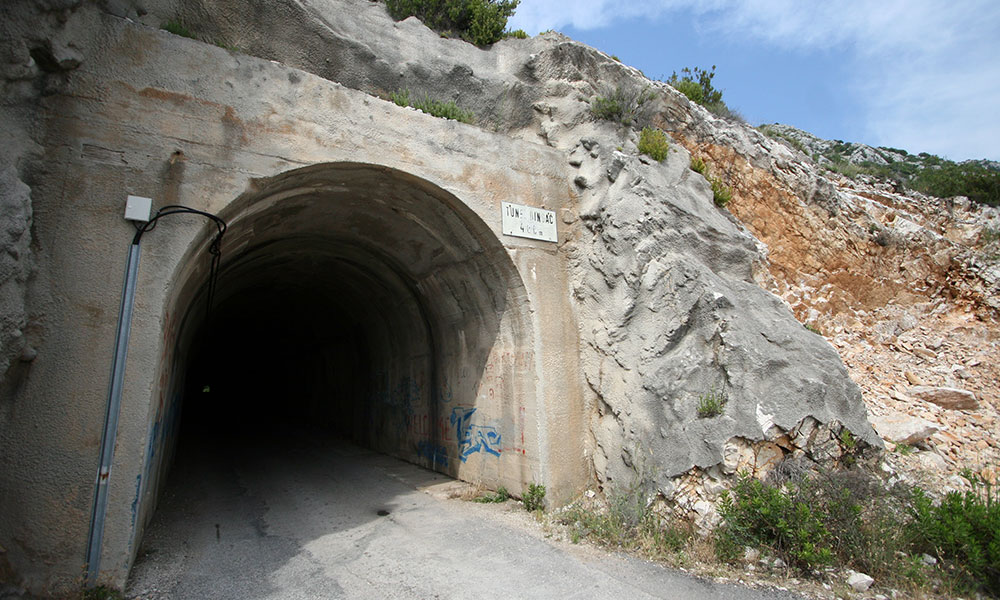There’s been a flurry of activity lately in regards to Croatian wines and more specifically, the Croatian wine growing region of Dingač. This is typical for this summer holiday time of year as people head to Croatia, find the beach and then find tasty wine to go along with it.
Now, there is often a bit of confusion around the term, Dingač. First and foremost, it’s a wine growing region in Southern Dalmatia. The wine generally planted there is the red grape, Plavac Mali, not a grape called “Dingač”. It’s just that due to this being the first protected wine region to be established in Croatia in 1961 (which was still Yugoslavia at the time) a great deal is made of a Plavac Mali wine that is grown in Dingač and thus it gives the appearance that this is a separate grape, when it’s not. It’s similar to how French Champagne is named after the region, but is usually comprised of Pinot Noir, Chardonnay, and Pinot Meunier grapes grown there.
This region produces amazing wines which is in no small part due to the 2,800 hours of annual sunlight as well as the light reflected off the Adriatic Sea at the base of it. But, an additional part of the allure is that while historically this region has grown grapes for centuries, it thoroughly sucked to harvest. With vineyards that often slope some 45 degrees towards the sea, the whole area can only really be worked by hand. Added in to this is that until 1973 you could only transport the grapes by donkey over the top of the Zabrada mountains. This was obviously not terribly optimal which led to the construction of the Dingač tunnel you see above that allowed direct access from the town of Potomje to the grapes, which you can see an aerial view of below.
 But, the region has now attracted large investors to plant there in recent years including Saints Hills and the American insurance CEO, Robert Benmosche. Surprisingly, the American family behind Korta Katarina don’t have a Dingač release despite being just up the coast in Orebić. These investors have driven up the price of land a great deal in addition to producing wines that are very expensive and raising controversy. For instance, the Saints Hills Dingač costs at least $60 per bottle and as noted by many (including us) that it does not taste like a Dingač wine. Gone are the eucalyptus and licorice elements to the nose as well the qualities to the body that make the wines from this region strong, yet easily paired with meals. It’s not to say it isn’t a good wine, but it’s not a true Dingač wine other than having its grapes sourced from the region.
But, the region has now attracted large investors to plant there in recent years including Saints Hills and the American insurance CEO, Robert Benmosche. Surprisingly, the American family behind Korta Katarina don’t have a Dingač release despite being just up the coast in Orebić. These investors have driven up the price of land a great deal in addition to producing wines that are very expensive and raising controversy. For instance, the Saints Hills Dingač costs at least $60 per bottle and as noted by many (including us) that it does not taste like a Dingač wine. Gone are the eucalyptus and licorice elements to the nose as well the qualities to the body that make the wines from this region strong, yet easily paired with meals. It’s not to say it isn’t a good wine, but it’s not a true Dingač wine other than having its grapes sourced from the region.
For those looking to visit, you’re going to be a bit let down unless you want to take the long road to Trstenik from Potomje. The only thing on these hills are the grape vines. There are no wineries of any sort to visit. That’s all on the other side of the tunnel in Potomje or with the exception of Grgić, in Trstenik.
This is something that Ernest Tolj of Saints Hills is trying to change as it is true that the view is quiet exquisite. Will this affect the winemaking in the region? Not if done well as some of the greatest wine regions in the world are all very touristic and when you balance visitors with viticulture, it can help to raise awareness of the region a great deal.
We talk a great deal more about Dingač as well as the other Croatian wine regions in our Dalmatian enotourism guide.

Just returned from a couple of weeks in Dalmatia. While there we visited the vineyards of Dingac (through the tunnel!) and the village of Potomje. In July the sloping vineyards received an unseasonable storm and the winemakers told me this will be a difficult year. We sampled the wines of Violic Vineyards, which are extraordinary. The tasting experience was augmented by plates of Croatian candy and cakes cooked with reduce grarejuice, tamarinds and raisins. The Plavac was delicious with lingering licorice overtones and lingering complex traces of vanilla and berries. Cannot remember their white which was also good, better tan the Posip we had later that day at Grgic.
Sounds like it was a good time, Bill.
The white was probably Maraština/Rukatac. It’s commonly grown down there and is generally a good deal lighter in body than Pošip with really good acidity.